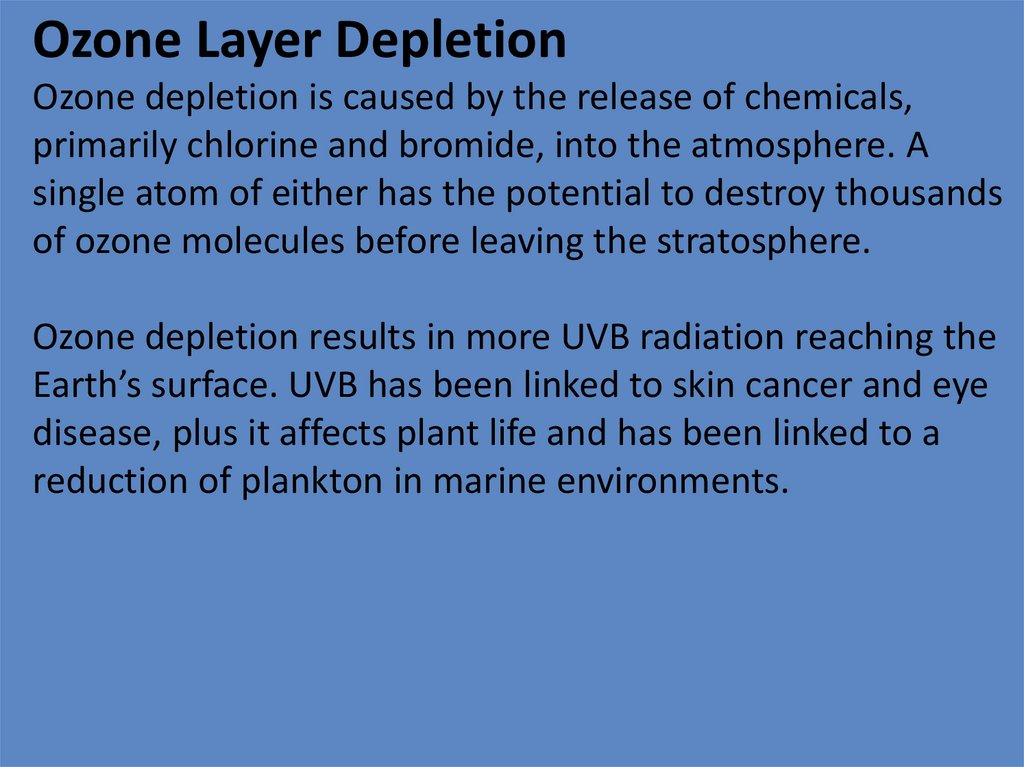Similar presentations:
Ecological problems in India
1.
Ecological problems inIndia
Name : Ayushi Lalwani
Group. : 191 B
Guided by : Mam Anna zhukovana
2.
The last two decades have seen a rampant rise inenvironmental challenges being faced by cities and
countries globally. In India, too, challenges related
to air pollution, waste management, scarcity of
water, conservation of natural resources, and loss
of biodiversity, among others, have been
increasing. This photo essay uses animations based
on satellite images to show the effect these
challenges have had on the country.
3.
Some of the major environmental problems are as follows:1. Ozone Depletion, Greenhouse Effect and Global Warming
2. Desertification
3. Deforestation
4. Loss of Biodiversity
5. Disposal of Wastes.
4.
5.
Stress on Natural ResourcesThis fast growth has led to huge stress on natural
resources, especially water. Some parts of the country
are facing extreme drought. The city of Chennai is going
through one of its worst ever droughts, and all the major
lakes that supply water to the city are either completely
dry or on the verge of drying out. This image shows the
drying of Lake Puzhal (Red Hills Lake) between October
2018 and May 2019. The lake is a primary water source
for the city.
6.
IncreasedMining
The massive need for
construction materials has led
to the disappearance of many
hills due to quarrying and other
mining activities. This image
shows the expansion of mining
areas in the Aravalli Hills in
Rajasthan between 1988 and
2018.
7.
Air PollutionUrbanization, private transport, crop fires, burning of
fossil fuels for electricity and other factors have caused
an increase in air pollution across the country. This
image shows the mean nitrogen dioxide (NO2)
concentration in the air across India between July 2018
and May 2019. There is a higher concentration of NO2 in
urban areas like Delhi, and in the eastern mineral belt
where coal is mined and burnt for electricity generation.
8.
9.
FiresStudies suggest that 90% of the fires in India are manmade. Either they are used for burning down forests or
for stubble burning or crop fires. This image shows fire
incidents across South Asia in 2018.
Solid Waste Management
Rapid urbanization and solid waste management issues in
the country have also led to fires in solid waste disposal
sites across India. This satellite image from 2016 shows one
of the worst fires in Deonar landfill site in Mumbai.
10.
11.
12.
UrbanizationIn the last two decades, India has urbanized at
an unprecedented rate. This image shows the
growth of Bangalore between 1990 and 2015.
New Cities
While existing cities are growing, the country is also
building new cities. This image shows the construction in
progress between 2016 and 2019 in the new city of
Amaravati, which would serve as the new capital for
Andhra Pradesh. The city is expected to house 3.5 million
people by 2050.
13.
Water PollutionFresh water is crucial to life on Earth, yet more sources are
being polluted through human activities each year. On a
global scale, 2 million tons of sewage, agricultural and
industrial waste enters the world’s water every day.
Water pollution can have harmful effects outside of
contamination of the water we drink. It also disrupts marine
life, sometimes altering reproductive cycles and increasing
mortality rates.
14.
Acid RainAcid rain comes as a result of air pollution, mostly
through chemicals released into the environment when
fuel is burned. Its effects are most clearly seen in aquatic
ecosystems, where increasing acidity in the water can
lead to animal deaths.
It also causes various issues for trees. Though it doesn’t
kill trees directly, acid rain does weaken them by
damaging leaves, poisoning the trees and limiting their
available nutrients.
15.
Ozone Layer DepletionOzone depletion is caused by the release of chemicals,
primarily chlorine and bromide, into the atmosphere. A
single atom of either has the potential to destroy thousands
of ozone molecules before leaving the stratosphere.
Ozone depletion results in more UVB radiation reaching the
Earth’s surface. UVB has been linked to skin cancer and eye
disease, plus it affects plant life and has been linked to a
reduction of plankton in marine environments.
16.
17.
Natural Resource UseRecent studies have shown that humanity uses so many
natural resources that we would need almost 1.5 Earths
to cover our needs. This is only set to increase as
industrialization continues in nations like China and
India. Over time, the depletion of these resources will
lead to an energy crisis, plus the chemicals emitted by
many natural resources are strong contributors to
climate change.
18.
19.
Climate ChangeThe majority of the issues previously listed contribute or
are linked to climate change.
The effects of climate change are widespread, as it will
cause issues with deforestation, water supplies, oceans
and ecosystems. Each of these have widespread
implications of their own, marking climate change as the
major environmental issue the planet faces today.
20.
The impact that human activities have onthe environment around us is undeniable
and more studies are being conducted each
year to show the extent of the issue.
Climate change and the many factors that
contribute to emissions could lead to
catastrophic issues in the future.





















 ecology
ecology








